5 Cars Posting Gains in a Soft Market
It’s been an eventful three months, and another update to the Hagerty Price Guide has landed. The unofficial start to the auction season kicked off in January with Kissimmee and Scottsdale, and now that the driving season is upon us, market activity has picked up since the start of the year. While the market overall remains nuanced, there were some clear standouts that gained notable value in the past few months and offered some lessons for where the hobby currently stands.(Read more to learn about the methodology behind the Hagerty Price Guide.)
1953–58 Studebaker Commander Station Wagon: +44%
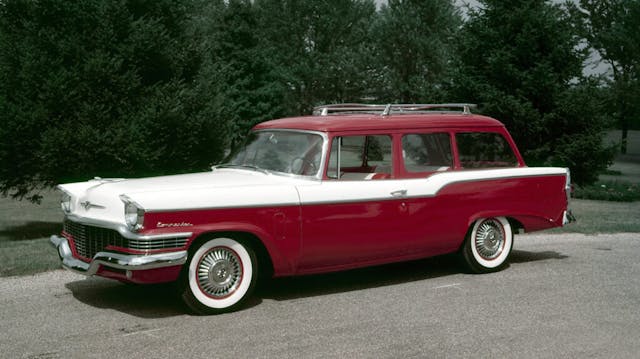
With its 1953 redesign, Studebaker’s Commander was the carmaker’s top-of-the-line model. Compared to the previous series, the Commander was significantly upgraded, with a stunning and more aerodynamic-looking design. Although the appearance was radical next to Studebaker’s larger competitors, the car’s success would be hampered by poor marketing and the company’s assumption that buyers vastly preferred four-door models; tooling up production to meet that perceived demand would prove a misstep for Studebaker (one of many the brand would make in the postwar period leading to its demise). Unable to meet demand for two-door models, early quality control issues, and an inability to compete with the cheap prices offered by the big three, Studebaker struggled with its customer base.
Since shuttering its doors in 1964, Studebaker has been overlooked by the broad pool of enthusiasts, left to a die-hard group of marque fans to keep the flame alive. The good news today is that their tenacity has paid off. There is very good parts support for a car that is far less common than its contemporaries, and there are more options for buyers who now find station wagons far cooler than they once might have.
A handful of Commander wagons popped up over the past few months, bringing strong and consistent values, above where the market has been historically. Not to worry, though, as these are still somewhat affordable buys; despite a 44 percent increase, a pristine Commander wagon can be had for under $40,000, and a driver-condition example in the $20,000 range. Is this a resurgence of the 1950s independent automakers among enthusiasts? Likely not. However, it does show the strong love for station wagons of all eras and marques—even the ones many of us forgot about.
1985–86 Audi Sport Quattro: +30%
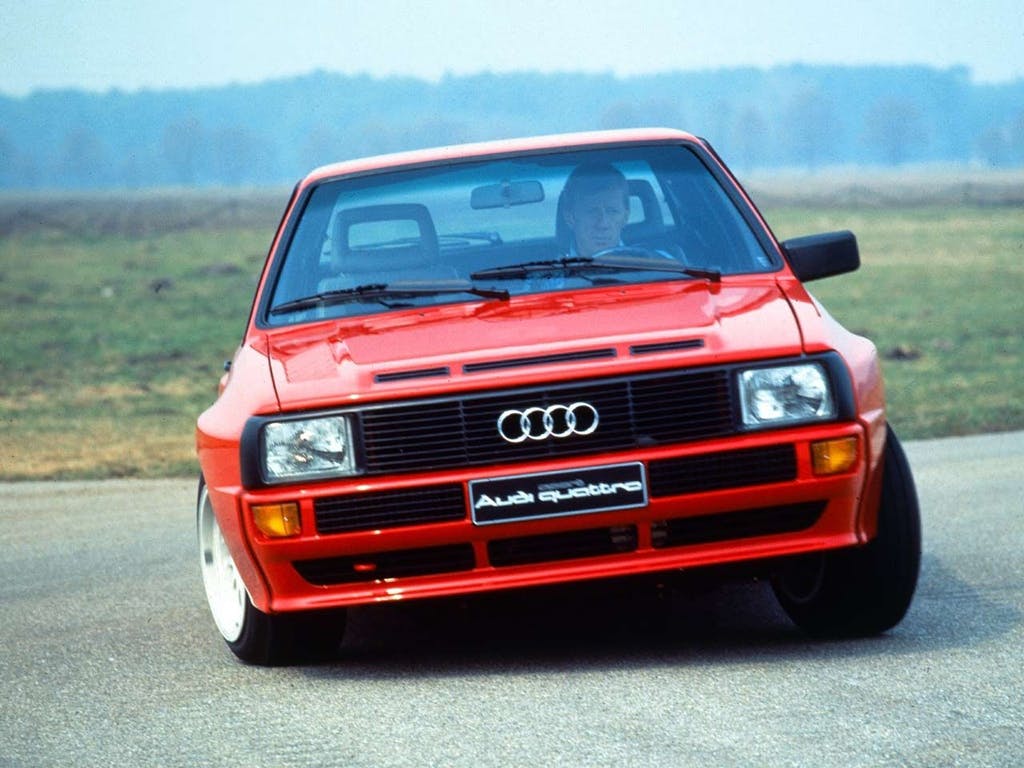
At the peak of Group B’s reign as the most unhinged class of racing, Audi led the way. The Quattro’s all-wheel-drive system changed the game completely, its prodigious grip necessary to put down all the power the turbocharged cars were producing. It would set the standard for rally racing moving forward.
The Sport Quattro was the second iteration of Audi’s dominant Group B racer, and it was shortened and lightened compared to the Ur-Quattro in order to better attack the tight, challenging roads of rally racing. Of course, as with many motorsports series, the FIA required a certain amount of road-legal examples to be produced in order to homologate the model for racing, and the road-going Sport Quattros kept Audi within the rules. With just 214 examples made, they were hyper-exclusive right out of the gate. Add in the fact that they share DNA with the insane rally cars, and you have a car that is highly sought after.
There are many reasons why the Sport Quattro has seen such a big jump in the past few months. These were already expensive cars; a pristine example could run in the neighborhood of $500,000, but that number’s increased yet again. With each passing year, the legend of Group B continues to grow, and it attracts new audiences—and new buyers. As the apex predator of the era, demand for these Audis is on the rise. There is also the fact that we haven’t seen one of these cars hit the market in quite some time, and while a car offered by RM Sotheby’s in January wasn’t a concours-quality example, it blew past the expected price of a concours car. One sale doesn’t constitute a trend; however, when dealing with a pool of just 214 cars, we have to take market examples when they come and make some educated leaps as to where the data are pointing. Right now, the data point upwards. Group B race cars have already sold for seven figures, so the direction their street-going counterparts are taking was only a matter of time.
1984–89 Subaru XT: +25%
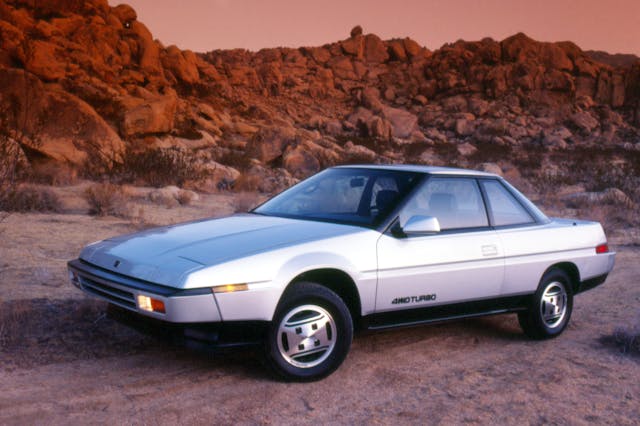
Nowadays, the term “sporty Subaru” is synonomous with the Impreza-based WRX and STI. For good reason, too, as Subaru was a force to be reckoned with on the World Rally Championship (WRC) circuit, and the WRX/STI were the closest mere mortals could come to being Colin McRae. But they weren’t Subaru’s first shots at making a sporty car to attract more buyers to the brand. We had the funky and exceptionally rad SVX, and before that, there was the XT.
Now, the XT name might be familiar to some as the sporty version of the Forester, but for a short time, it was actually a car model—a wedge-shaped and weird-looking one at that. It was the ’80s, after all, and anything sporty needed to look like a door stop, apparently. Subaru sure did nail everything about the 1980s with this car. Unfortunately, the Japanese giant managed to sell just under 100,000 of these things, and before long it would be relegated to memory. There are a number of enthusiasts flying the XT flag, however, and recent sales above price guide–appropriate values have driven values jumped a few grand. Despite that, you can still pick up an AWD, turbocharged XT in the neighborhood of $20,000. Will the XT follow the Brat as the latest old Subaru to gain traction in the collector world? Time will tell—they could be simply too wacky and uncommon to gain long-term traction.
1973–77 Chevrolet Monte Carlo: +24%
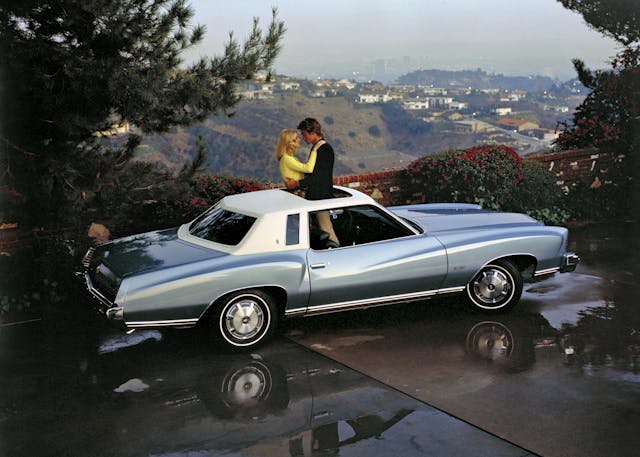
With the launch of the G-body platform, General Motors effectively cornered the personal luxury market when the redesigned Pontiac Grand Prix and all-new Chevrolet Monte Carlo arrived for 1970. Like it or not, these cars would set the standard for mid-size, sporty cars throughout the ’70s. The A-Body based 1973 Monte Carlo would come out of the gate strong, selling more than a quarter-million cars (over 50 percent of the total first-generation production), and sales numbers would increase from there.
Mid-’70s American cars are a bit like the late, great Rodney Dangerfield: Large, brash, and they just “don’t get no respect.” They’re hobbled by abysmal horsepower ratings, poor gearing, and awful parts support from the aftermarket. But despite all that, they have a certain charm to them. Nostalgia is a strong motivator, and it has a strong influence on what we’re willing to spend our hard-earned money on. While we can’t get in the head of every buyer, it is clear that with a number of strong sales the past quarter, the mid-’70s Monte is receiving some of the appreciation in the collector market that it’s been missing for far too long.
1964–70 Honda S600/S800: +21%
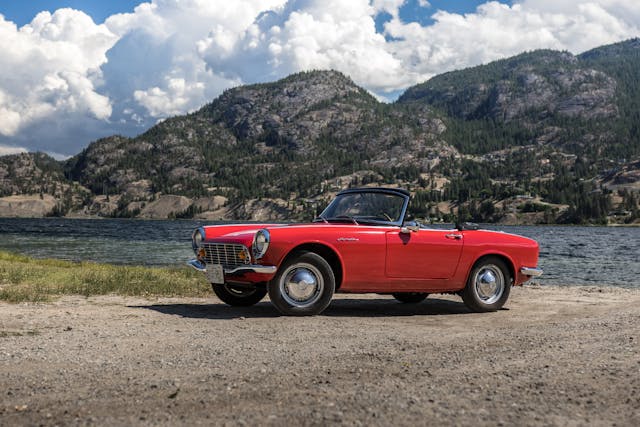
We may not think of it now, but Honda started life as a motorcycle company. That its first car, the S500, was a tiny, sporty roadster seems in hindsight a logical way to step into the world of four-wheeled transportation. These cars and the siblings that followed would solidify Honda as not just a car builder, but also as an engine builder. The tiny engines, (606cc in the S600 and 791cc in the S800) would make decent power for their size, but in Honda fashion they’re best known for their insane redlines (9500 rpm in the S600) and fantastic engineering. Turn the clock ahead three decades after the last S800 left the factory and Honda gave us a worthy successor in the incredible S2000.
Classic Japanese cars occupy a weird space—a few from the 1960s and ’70s, like the Toyota 2000GT and the Datsun 240Z, sit at the front of our consciousness. Others, like the Honda S600/800, have been criminally overlooked. Sure, they may be tiny for American consumers, but they carry everything that makes a sporty Honda so great, and were foundational in establishing how we think of Japanese enthusiast cars. People are taking notice lately, however, judging by the recent sales of two very good examples (one crested into six-figures). While this doesn’t mean that every S600 or S800 is a six-figure car now, it does demonstrate swift-growing interest, and that the S600/S800 are cars to watch.
***
Check out the Hagerty Media homepage so you don’t miss a single story, or better yet, bookmark it. To get our best stories delivered right to your inbox, subscribe to our newsletters.



In deference to car lovers of both genders… “One (wo)man’s trash is another (wo)man’s treasure”. As a sports car guy the Quattro does catch my eye. And from growing up in the days of the family wagon, the Studie deserves a little consideration as well.
I’m always looking at trifives that are for sale. They seem to be gobbled up fast. Especially the hardtops with V8’s and automatic transmissions. 4 doors, not so much.
Meh…
First of all, I don’t consider 80’s cars to be “classics”. That being said, all the varying and opposite viewpoints expressed on this thread (like the one I just expressed) prove one thing. Any car is worth what someone is willing to pay for it. If you have one you want to sell, you just need to find the right buyer.
Eighties cars not classics? Tell that to anyone lucky enough to own and drive an Alfa Romeo GTV-6 … or a Mercedes W123! We are almost to the point where a 2000 model year car will be 25 years old, which by all measure gets them into classic territory.
So many thoughts and opinions out there, if it’s an investment you sought so be it and likely youre not driving it and these figures and trends matter but for the rest of us, just have pride in your ride, get out and enjoy the open road, tinker and upgrade and find someone who shares the passion that you hope can continue to turn the tires when you pass. This stuff is living history and bringing smiles to folks that see us drive by and remember when. I’m thrilled to be behind the wheel of what Mom drove me to school in from the 60’s and it’s not for sale! I appreciate the time and effort the authors put in to sharing and by the comments people are obviously opening it and reading it. Job well done despite the criticism, if you have the time knowledge and desire then submit articles because I love reading the stories of stuff passed on over the years that has history and a story to be told more than fresh shiny paint and a price tag.
I believe the Monti, GP, Cutlass and Regal of theera were termed A body specials.
My dad was partial to Monte Carlo’s and owned a couple of 70’s models in succession. It’s been a while but I’m thinking first and second generation cars. At the time my parents’ take was cars needed to be unloaded at 50K miles before they became maintenance nightmares. They were living in the San Fernando Valley back then and when it came time to sell, my dad’s ad in the local paper (this is way way way before Craigslist) would have the phone “ringing off the hook.” The cars turned out to be highly in demand in the Latino community and sold almost immediately. I’d like to think they’re still around somewhere in LA, maybe with custom paint jobs and riding low.
I always thought that the mid sized luxury coupes of the 70’s would eventually gain a following. They sold millions of them, every American manufacturer offered their particular flavor from GM Monte Carlo and Grand Prix, Chrysler Cordoba, Charger SE and Magnum to Ford and the wildly popular Downsized Thunderbird and Cougar. I recall as a teenager seeing no less than ten Thunderbirds and Cougars in the immediate area of my town within six months of the introduction of the new downsized Tbird and Cougar! Considering that they are two door coupes, that’s a stunning amount of acceptance of style over practical purposes!
I’m not particularly interested in auctions or there relevance but some of the older advertising shots make me smile. Some are point on clear but some like the ad above for the ’74 Monte makes me smile broader. At first it seems typical of the era. Then you notice how far down the silly path the marketers have gone. Have you ever tried to stand up in a sunroof car? Let’s caption this ad why don’t we? “come on baby, I brought you up to lookout point to make out. But first I want us to stand on the seats of my knew Chevrolet so we can see the view and so can all of the other people up here at the point.” Her reply, “But Jerry, couldn’t we just get out of the car? My heels have already gone through the faux leather twice! I know you want me to know that you have a big sunroof but…”
Ha, ha, ha! I noticed that the couple was standing up in the car and sticking out of the sun roof. Having many coupes with sun roofs, Targa tops and T-tops over the years and even a convertible, I don’t remember ever trying to get a lady to stand up in the car with me to make out. I had too much respect for the various ladies and the various upholstery materials.
Too bad I find none of these cars, with the exception of the Audi, to be in any way desirable.
I like the odd stuff. Who wants to see another Camaro or Mustang?
By the way I drive a 1962 Greenbrier.
Peace
I bought a ’60 Lark wagon in 1973 and sold it in 1979 for double what I paid for it. Looks like I sold too soon.
Supposed car enthusiasts calling the Audi Sport Quattro a “dog” is the height of silly. Anyone who leaves the garage long enough to pay attention to the market understands that it shifts over time, as car people age in and out of the market. If it didn’t, the car scene would have died decades ago.
I agree with the first poster here, most of these are not “real world” cars.
The Audi is very expensive and rare.
The Subaru, even up here in the Northwest where every third car is one, is almost extinct. You’d have as much luck seeing a Stutz Bearcat at McDonalds.
Honda 600. Again, not many around.
Finally, the Studebaker…I spent 10 years in the SDC…so I saw a lot of Studebakers. Those 50s wagons are rare (the later Lark-based cars somewhat less so). Because they were so cheap for so long, not many survived and those that did had terrible, inauthentic “restorations” (usually with horrid 1980s GM fabrics). A lot of Studebaker owners and collectors are notoriously cheap.
There are a relative handful of correct nice ones, one of those must be the car you based your sale on.
So, that leaves us with the Monte Carlo…aka the trailer park Bentley.
Plenty out there, but again we see more of the later downsized cars.
But I would love a similar 73 Olds Cutlass with those unique wheelhouse bulges.
I see people dissing some of the cars. If you don’t like a model, DO NOT BUY IT! There is something out there for everyone. The thing is to KEEP THE OLD CARS GOING! If the later generations don’t get interested, then YOUR old car will just be scrap iron to them.
Exactly; said much the same above!